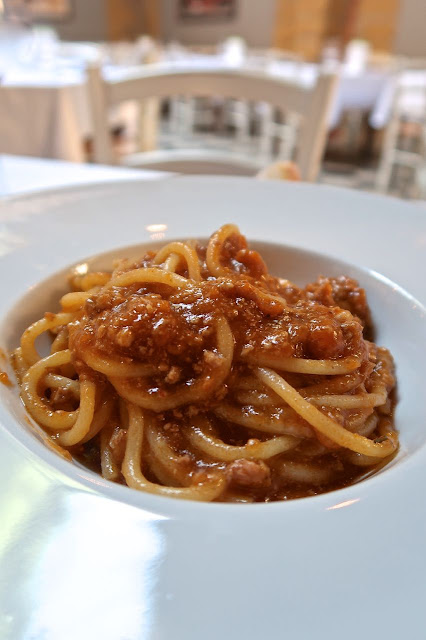Unique in the world, Palermo’s Arab-Norman architecture has delighted and fascinated art historians for centuries. Designed by Roger II in 1130, the Cappella Palatina is the finest example of Arab-Norman art in Palermo, founded during the 12th century after Roger II's father and uncle conquered the island, and was according to Guy de Maupassant: “the most surprising religious jewel of human thought and created by an artist.” Located on the middle level of Palazzo dei Normanni's three-tiered loggia, its glittering gold mosaics are complemented by inlaid marble floors and a wooden muqarnas ceiling, the latter a masterpiece of Arabic-style honeycomb carving reflecting Norman Sicily's cultural complexity. Embracing many aspects of Arabic life and enlisting North African artists and architects in their building projects, the result was an astonishing fusion of north and south which can be admired in the nine constructions that make up Palermo's UNESCO Heritage Staus, including the Palazzo dei Normanni, Cappella Palatina, Church of Santa Maria dell’Ammiraglio, Church of San Cataldo, and spectacular cathedral in Monreale. As UNESCO says, “Collectively, these constructions are an example of a social-cultural syncretism between Western, Islamic and Byzantine cultures on the island which gave rise to new concepts of space, structure and decoration. They also bear testimony to the fruitful coexistence of people of different origins and religions: Muslim, Byzantine, Latin, Jewish, Lombard and French.” Scattered all over the island, Sicily’s World Heritage sites highlight the island’s diversity and provide a fascinating synopsis of its long history and extraordinary beauty.
Few culinary traditions are as rich as that of Sicily. Built over the centuries, bearing the most varied of influences and priding itself on the availability of an impressive range of local ingredients and time-honoured recipes, regional cuisine is one of Sicily’s most invaluable treasures. Following a full morning spent at Cappella Palatina, we wandered over to Osteria Ballarò set within the former stables of Palazzo Cattolica. Perched on the edge of what was once the Jewish quarter, where Jews and Arabs peacefully coexisted, Osteria Ballarò is full of charm accented with bare stone columns, exposed brick walls and vaulted ceilings. Created with the precise intention to maintain and celebrate the richness of Sicilian culture and its culinary tradition, Osteria Ballarò rigorously crafts its menu out of local Sicilian ingredients as well as some niche local products. Chef Calogero Branca, uses only seasonal products, picked from the land or in the markets with zero km ingredients, to prepare recipes for the restaurants à la carte menu every day, accompanied with a selection of exceptional local wines.
Palazzo dei Normanni was built in the 9th century by the Arab-Islamic rulers for the harems of their emirs, and was then expanded by the Normans who subsequently conquered Sicily in 1072
Located on the middle level of Palazzo dei Normanni's three-tiered loggia,
Cappella Palatina is the finest example of Arab-Norman art in Palermo
Beautiful mosaics decorate the loggia wall on the exterior of the Capella Palatina
Detailed mosaics and decorative geometric marble ceilings make a grand statement before entering the Chapel, designed by King Roger II in 1130
Only a select number of visitors are allowed in the Cappella at any given time
to reduce overcrowding
According to Guy de Maupassant: “the Cappella Palatina was most surprising religious jewel of human thought and created by an artist”
These exquisite mosaics were mainly the work of Byzantine Greek artisans brought to Palermo by Roger II in 1140 especially for this project
Beautifully carved columns with exquisite mosaics and latin text cover every surface of the chapel
The chapel's unique wooden muqarnas ceiling, a masterpiece of Arabic-style honeycomb carving reflect Norman Sicily's fusion of Western, Islamic and Byzantine cultures
Glittering gold mosaics are complemented by inlaid marble floors
and cover every surface of the Cappella
Aside from the Cappella, a tour of the Palazzo dei Normanni includes a visit to the royal apartments including the mosaic-lined Sala dei Venti, and Sala di Ruggero II
Magnificent 12th-century bedroom of King Roger II completely covered with glittering mosaics
Detail of the artistry
Osteria Ballarò set within the former stables of Palazzo Catholic, on the edge of what was once Palermo's Jewish quarter
Exposed brick walls and vaulted ceilings are original details from the ancient stables
Osteria Ballarò features art from local Palermo artists throughout the restaurant
Chef Calogero Branca's menu of traditional Sicilian dishes
Fresh warm bread
Our server pouring two glasses of local Sicilian wines
Etna Bianco Nerina Girolamo Russo 2018
A delicious, vibrant and layered Etna Bianco
Castellucci Miano Nero d'Avola 2017
Delicate and seductive, this is one of the best Nero d'Avola wines in Sicily
Antique signage art on the exposed brick wall of the restaurant
Whole wheat Spaghettone with seafood sauce and sea lettuce powder
Crudo e cotto di mare
An appetizer selection of raw and cooked seafood
“Arancina” di Baccalà
Fried Local Sicilian Sardine with sweet and sour Giarratana onions, raisins and caprino cheese mousse
Marinated Seafood Salad with shrimp and octopus
Swordfish Crudo with pistachios
Mullet and wild fennel caponata
Fritelle Siciliane di Neonata: Sand Eel Fritters with Agrodolce
Raw Red Mazara Prawn
Caffe Macchiato
Traditional Sicilian Shortbread







































No comments:
Post a Comment